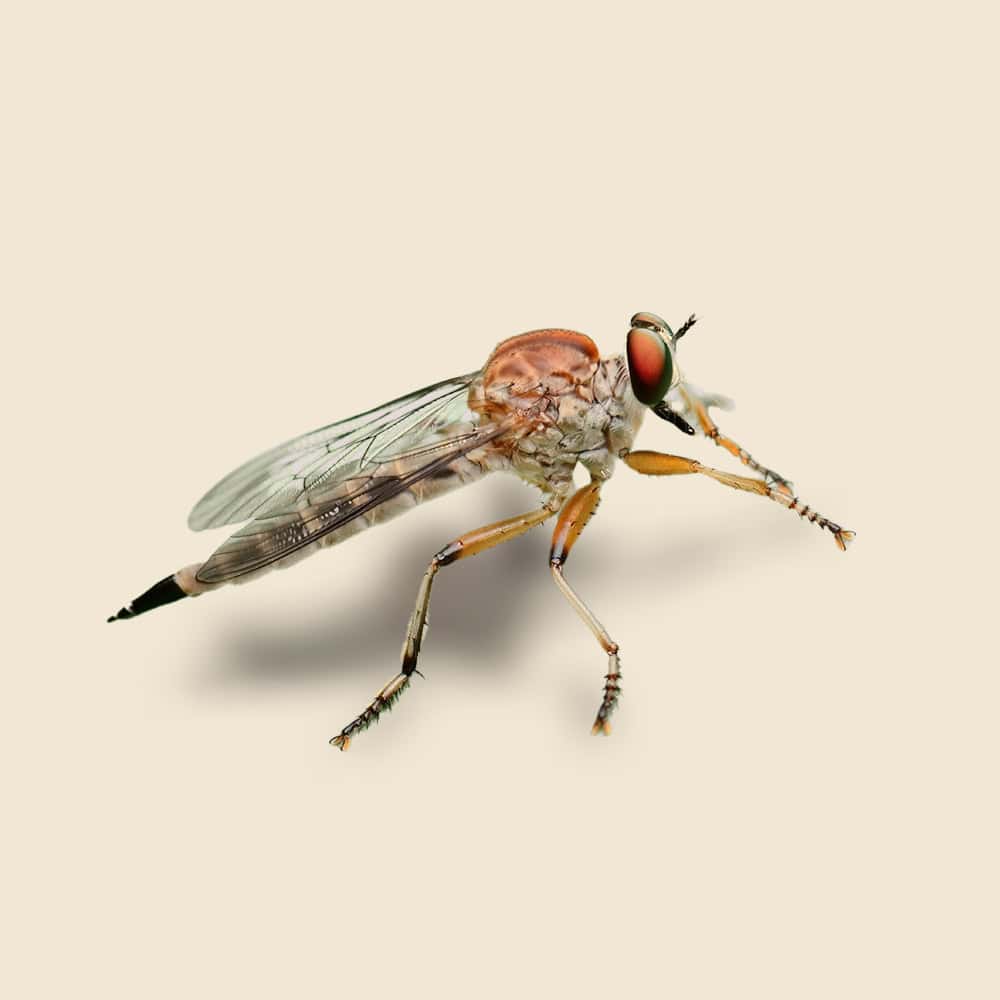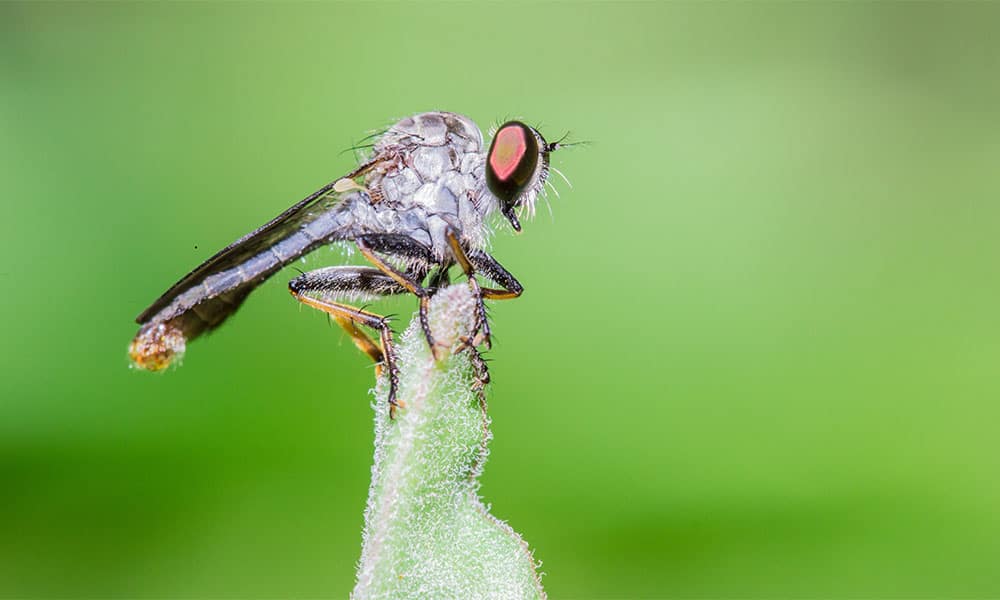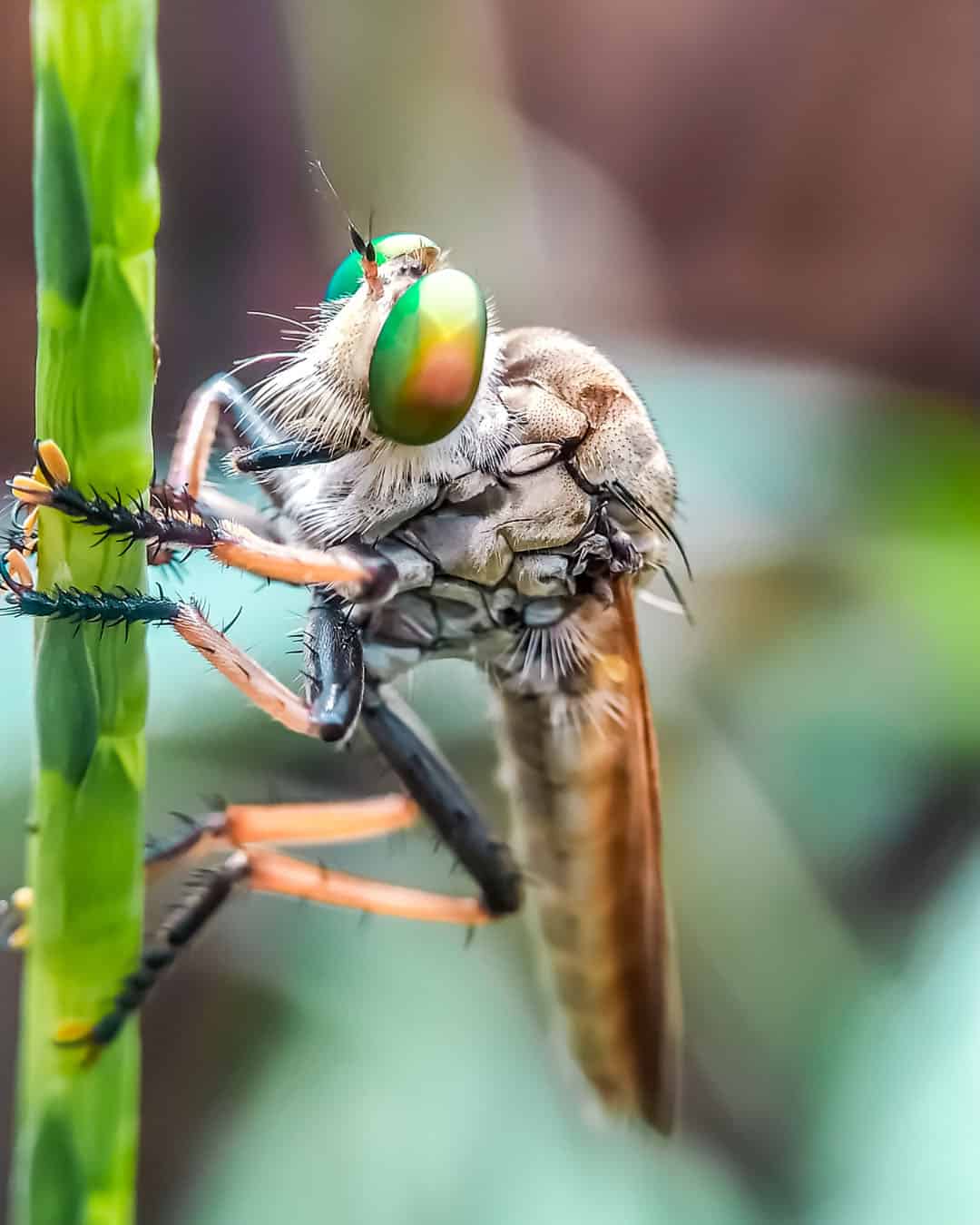Robber Fly Facts & Information
Robber flies, known for their aggressive predatory behavior and impressive aerial skills, can be a concern in outdoor environments where they are often found. Although they are not harmful to humans, their presence can be unsettling and may indicate an imbalance in the local insect ecosystem.

Asilidae
What You Need To Know About Robber Flies
What do robber flies look like?
Robber flies, belonging to the family Asilidae, are medium to large-sized flies with a distinctive appearance. They typically have a stout, robust body covered with short, dense hairs. Their colors range from black to grayish-brown, and they often have a hairy or bristly texture. They feature large, multifaceted eyes that can be quite striking and are equipped with powerful, spiny legs used for grabbing prey. Their wings are clear to translucent and may have dark markings.
What do robber flies eat?
Robber flies are predatory insects that feed on other insects. They are known for their aggressive hunting behavior and can capture and consume a wide range of prey, including flies, bees, wasps, and beetles. They use their strong, spiny legs to grasp and immobilize their prey before feeding.
What sort of habitat do robber flies live in?
Robber flies are found in a variety of habitats, including open fields, meadows, forests, and gardens. They are often seen in areas where there is abundant vegetation and other insects. They prefer sunny locations and can be found perched on plants, fences, or other structures where they can easily spot and ambush their prey.
How do robber flies commonly behave?
Robber flies are highly predatory and are known for their aggressive hunting tactics. They actively patrol their territory in search of prey and use their excellent vision to spot potential victims from a distance. Once they identify a target, they fly swiftly to capture it mid-air or on the ground. After capturing their prey, they inject digestive enzymes to liquefy the tissues before feeding.
Did you know this about robber flies?
Robber flies are sometimes referred to as “assassin flies” due to their formidable hunting skills and aggressive nature. They play a beneficial role in controlling pest insect populations. Some species of robber flies have evolved to mimic wasps or bees as a form of defense, deterring potential predators with their deceptive appearance. Their predatory behavior helps maintain balance in ecosystems by keeping the populations of other insects in check.
Understanding Robber Fly Infestations
Understanding robber fly infestations is key to effective management. Robber flies are robust, predatory insects with large, bulbous eyes and a characteristic "robber" appearance due to their habit of preying on other insects. They are typically about 1/2 to 1 inch long, with a range of colors including black, gray, or brown. Robber flies are usually found in gardens, fields, and wooded areas where they hunt for other flying insects such as bees, wasps, and flies. They are most active during the warmer months and can be seen hunting in open, sunny areas.

How Hearts Handles Robber Fly Treatment
Hearts Pest Management employs an integrated pest management approach to handle Robber Fly infestations.
Robber Fly Inspection
Robber Fly Treatment
Robber Fly Prevention
Educational Resources

Think You Might Have a Robber Fly Infestation?
At Hearts Pest Control, we understand the challenges associated with Robber Fly infestations and are here to provide professional solutions tailored to your needs. Flourishing in warm and humid climates, they are prevalent in many regions, including San Diego County, Orange County, and Los Angeles County.